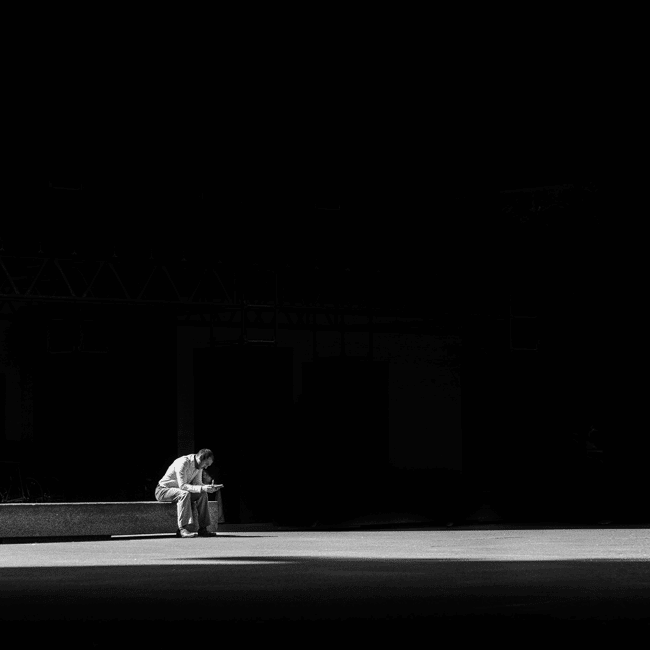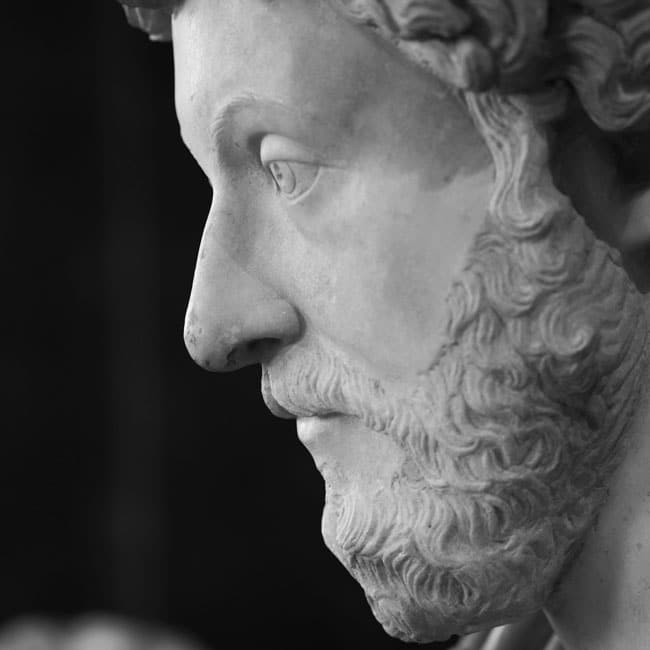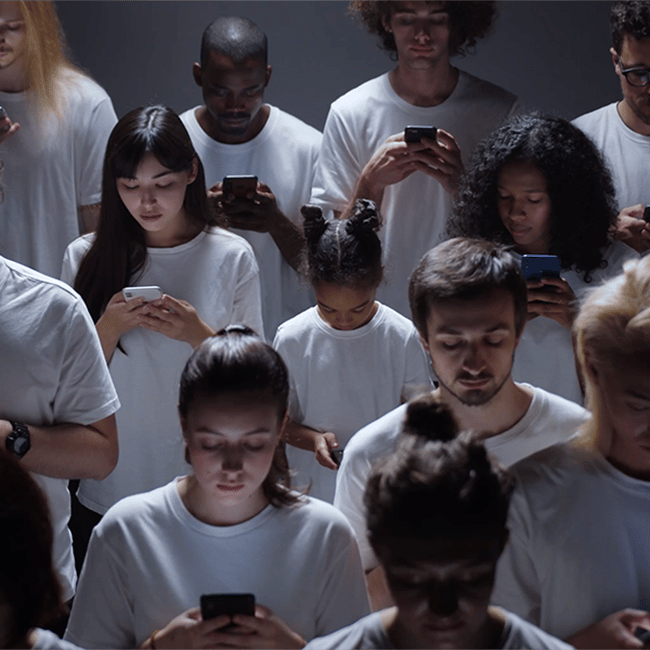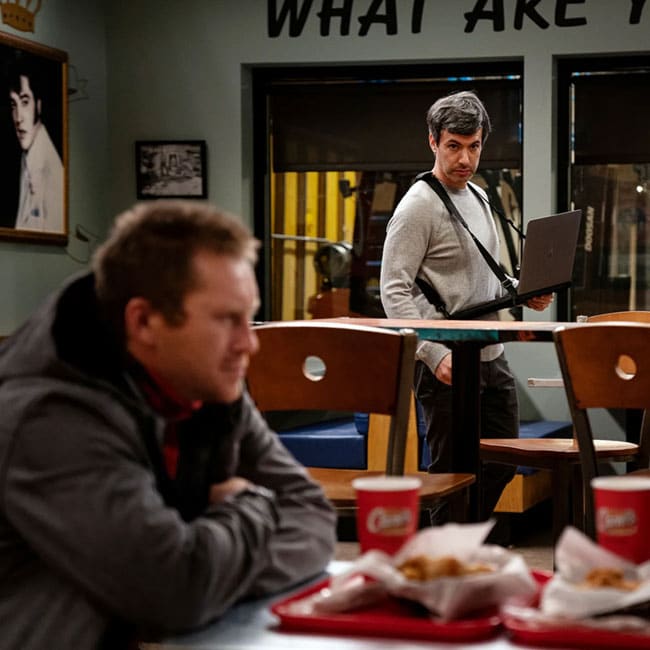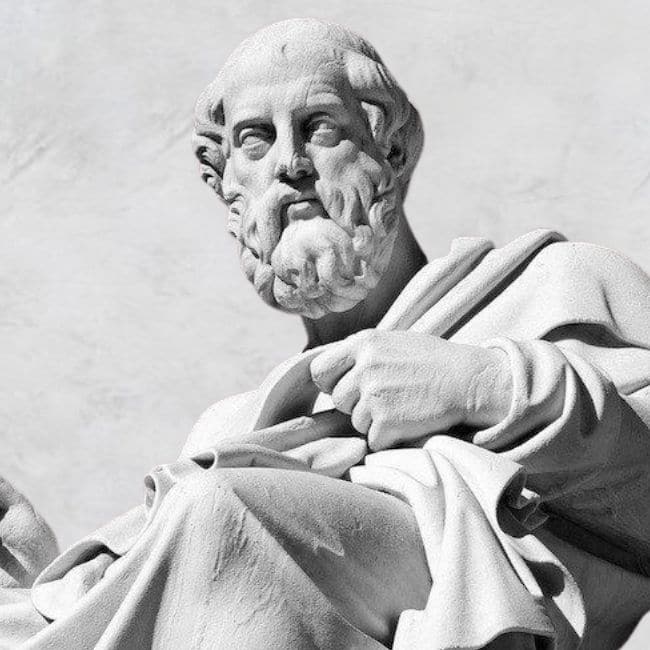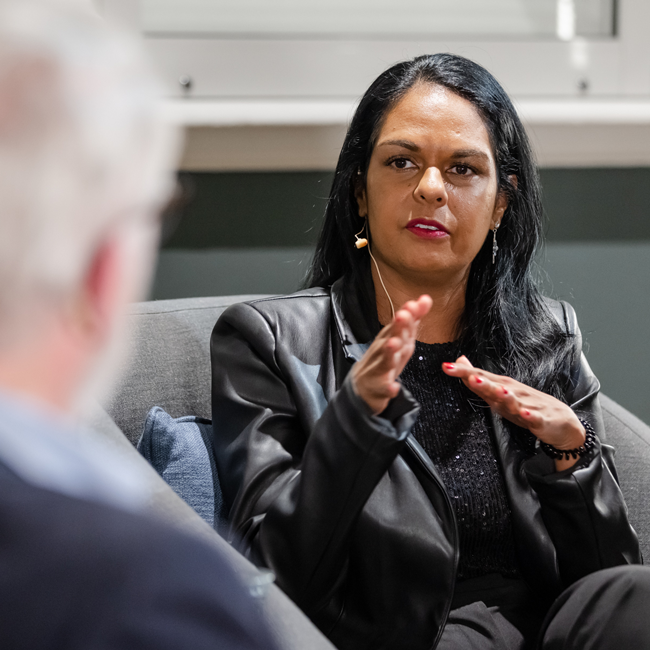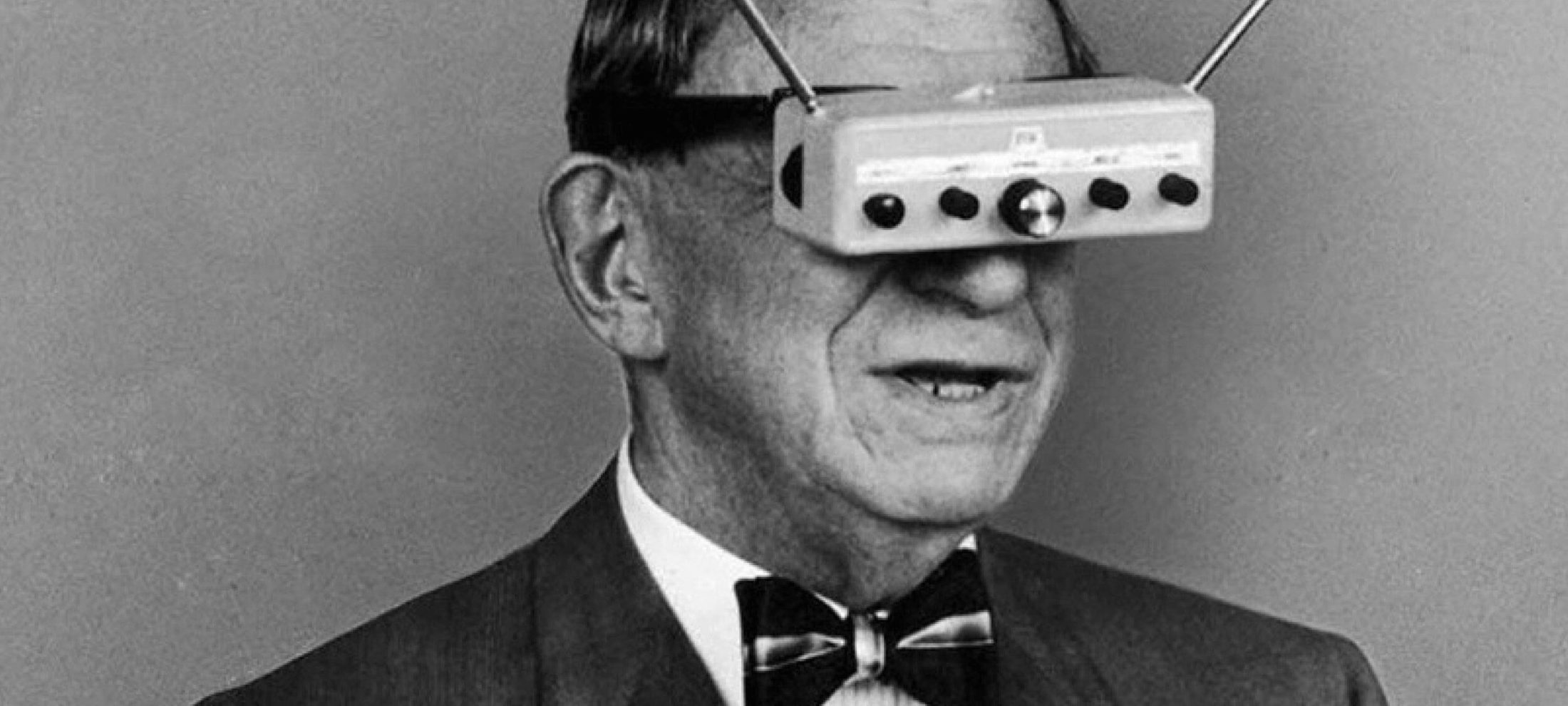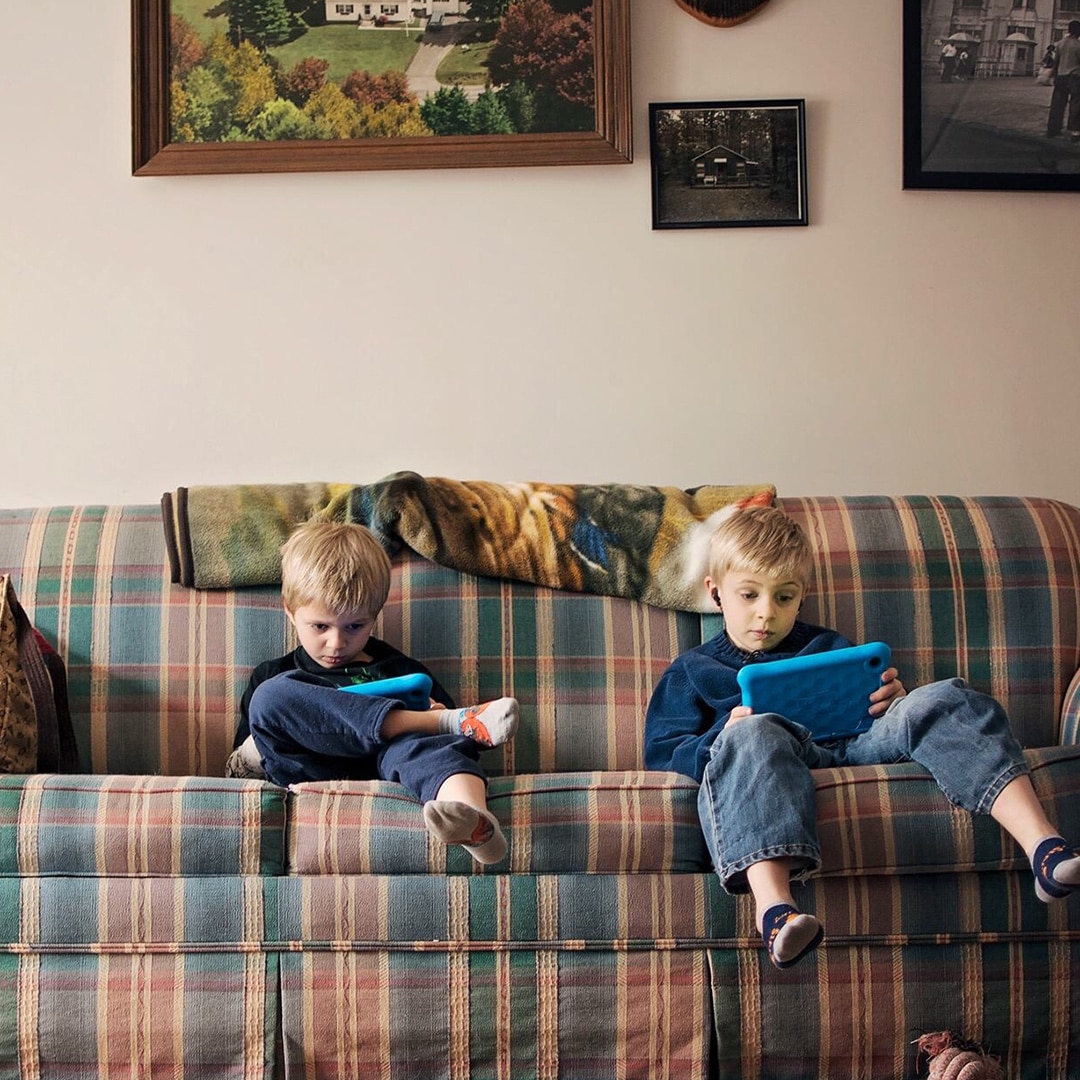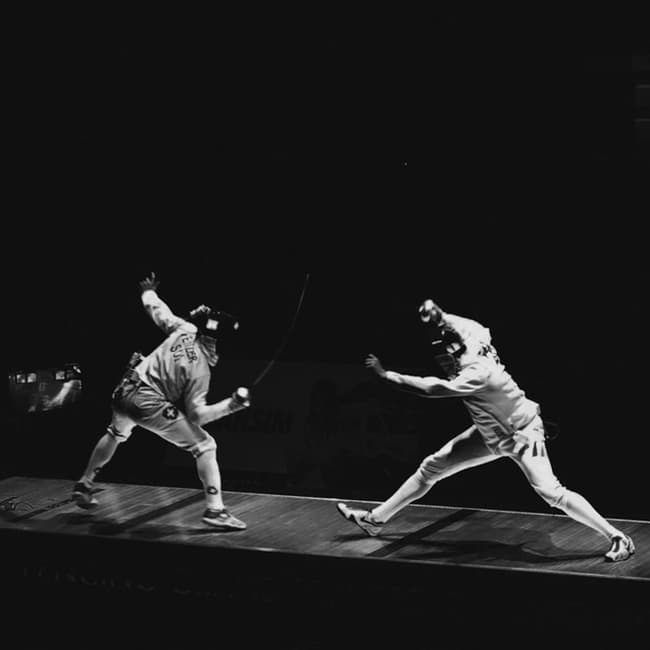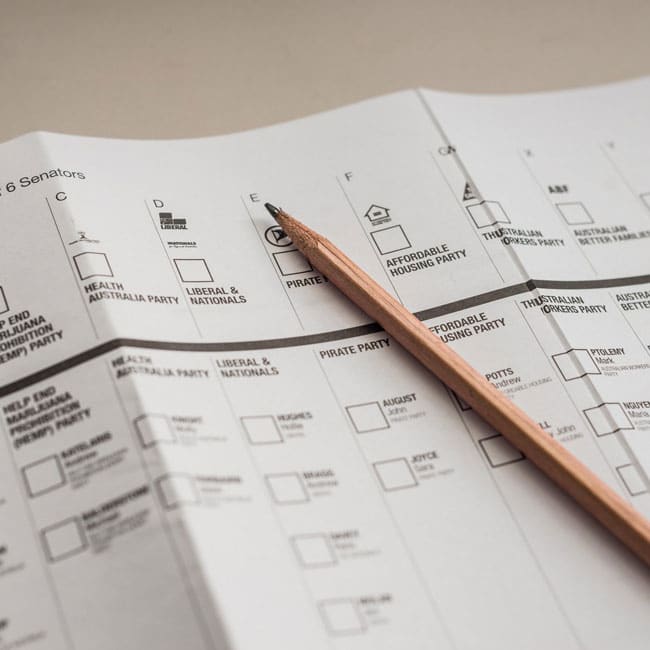Breaking news: Why it’s OK to tune out of the news

Breaking news: Why it’s OK to tune out of the news
Opinion + AnalysisRelationships
BY Dr Tim Dean 1 SEP 2022
News is designed to grab your attention but not all of it is relevant to your life. The good news is you needn’t feel guilty for tuning out of news that makes you sad or angry and is out of your power to influence.
Two stories appear on your favourite news website. The first is about an adorable half-tonne walrus named Freya being euthanised in Norway because gormless onlookers refused to heed government advice to keep their distance.
The second covers China’s central bank cutting interest rates to stimulate growth while most other wealthy nations around the world are raising them to fight inflation.
Which of these stories grabs your attention the most? Which are you most likely to click on?
If you answered the first, then you’re not alone. In fact, the ‘popular right now’ lists on most news websites show that rogue wildlife invading metropolitan areas easily outrank stories speculating on China’s economic health.
But which most affects your life?
Even if you happened to be in Norway during the Freya saga, the news would be unlikely to impact your day-to-day goings on (unless it was a warning to steer clear of the beast). On the other hand, if China slips into recession, it could alter the global financial and geopolitical landscape, impacting everything from grocery prices to the prospect of war in Taiwan.
I’m not intending to shame you for clicking on the more sensationalist story. I did. We are only human, and Freya’s story pushes emotional buttons of care for native wildlife as well as outrage directed at the twits whose desire for a selfie caused the death of an innocent animal.
But what are we looking for when we switch on the radio or swipe that phone screen? What really is ‘news’? Through our cumulative clicks on news stories, what are we asking media outlets for? And is what we’re asking for doing us any good?
When we click on a story about horrific crime, a child abduction, a fatal shark attack or one of the countless stories about celebrity dalliances, what does it tell us about the world? Probably not much. In fact, these stories probably do more to distort our understanding of the world rather than clarifying it.
Horrific crimes do happen, but a lot less frequently than we might think. Child abductions by strangers are incredibly rare (that’s what makes them newsworthy when they happen). Shark attacks do happen, but you’re more likely to be injured driving to the beach than you are by in the toothy maw of a cartilaginous fish. And when it comes to celebrities, no-one is surprised that high status individuals living in a wealth and fame bubble behave just like us, only more so.
The deeper impact of news like this is that it normalises an abnormal image of the world, one coloured by our natural fascination with violence, tragedy, mortality, injustice, sexual indiscretion and scandal. Many of these things make the news because they’re exceptional in the modern world; it’s precisely because our society is more peaceful and stable than at just about any point in history that conflict and instability stand out.
But through constant exposure to the exceptional through news headlines, it eventually becomes normal. Studies have shown that Australians consistently overestimate the levels of violent crime in their neighbourhoods, due at least in part to the way crime, conflict and injustice are reported but lawfulness, peace and justice are not.
The torrent of sensational news also comes at an emotional cost, especially when we’re confronted with a daily litany of injustices from around the world. We are naturally inclined to experience outrage when we hear about how women are mistreated in Afghanistan, about civilians being killed in Ukraine or another mass shooting in school in the United States, and this outrage motivates us to take action to rectify it. But the simple fact is that we have limited power to act on most of the injustices that we encounter in the news. Mass media has expanded our sphere of perception to be global but our sphere of influence remains largely local.
This, in turn, can inspire feelings of disempowerment and hopelessness. And it can encourage us to seek to regain our sense of agency wherever we can. However, it’s far easier to regain a sense of agency, such as by complaining or calling people out on social media, than it is to have power over grand or distant events. Social media can make us feel like we’re doing something, like we’re fighting back against injustice, but much of that is illusory. Often all we’re doing is sharing the injustices around, getting other people outraged and further eroding their sense of agency.
Life is cacophonous. News is supposed to filter out the noise and reveal what is important, relevant and impactful so we can focus our attention on what really matters. But news has descended into its own form of cacophony. We often fall back on our gut to sense what is important, but our gut is far from impartial.
The point is not to stop engaging with the news. It’s not to blame ourselves or others for being human. It’s to remember that the news isn’t always healthy. It isn’t always relevant. It doesn’t always reveal the whole of the world as it really is.
The good news is we do retain some control, and we have some responsibility over what we choose to view, which outlets to follow, which stories to click on, which ones to share. It takes some discipline, but that’s what living ethically means: cultivating the discipline to do what’s right, not just what’s easy.
Sometimes it means choosing not to engage with certain news. We shouldn’t feel guilty about that. We can pick our battles and choose where to invest our emotional energy. If we choose wisely, we can engage with the portions of the world over which we have greater influence and actually change it for the better.
We might still click on that story about a rogue walrus being killed because of inconsiderate onlookers or be amused by the latest celebrity scandal, but we can also remain wise enough to know that these do not reflect the world as it is, only the world as it appears through the imperfect filter of the news.
Ethics in your inbox.
Get the latest inspiration, intelligence, events & more.
By signing up you agree to our privacy policy
You might be interested in…
Opinion + Analysis
Health + Wellbeing, Relationships
The myths of modern motherhood
Explainer
Relationships
Ethics Explainer: Ethics of Care
Opinion + Analysis
Health + Wellbeing, Relationships
The etiquette of gift giving
Opinion + Analysis
Relationships
In defence of platonic romance
BY Dr Tim Dean
Dr Tim Dean is Philosopher in Residence at The Ethics Centre and author of How We Became Human: And Why We Need to Change.
Uncivil attention: The antidote to loneliness

Uncivil attention: The antidote to loneliness
Opinion + AnalysisRelationships
BY Dr Tim Dean 14 JUN 2022
We have built ourselves a lonely world but there are ways to forge the genuine human connections that we all need to flourish.
We live in a strange world. Consider the skill that many of us have carefully cultivated over years of city living of actively ignoring other people around us while hoping that those people will actively ignore us in return.
Think about how you enter a lift in a busy shopping centre or an office building. Perhaps a quick glance at those already standing inside, a small shuffle to ensure you’re not standing too close to anyone else, a quick tap of the “open door” button to allow a latecomer to enter, a fleeting smile to acknowledge that they almost missed it, and then you diligently stare into space desperately hoping no-one starts a conversation. Some lifts even mercifully include little screens displaying the weather and news headlines that offer everyone inside a sink for their collective attention.
This is a textbook example of what the Canadian sociologist Ervin Goffman called “civil inattention”. This is our tendency to actively not engage with those around us while not ignoring them entirely.
Civil inattention enables us to ensconce ourselves in a protective bubble of anonymity even while we’re shoulder-to-shoulder with other people. It’s both a defence mechanism that prevents us from having to constantly expend social energy interacting with every individual we encounter while also being a social lubricant that allows millions of strangers to coexist in relative peace.
The price of this unwritten social contract of non-engagement is loneliness. Indeed, it’s easier to feel isolated and disconnected from others in the middle of a bustling city than it is in a small town.
And with the growth of high density living over the last several decades so too has loneliness spread, especially in the wake of the COVID-19 pandemic. Loneliness was already prevalent prior to the advent social distancing and enforced lockdowns, but recent surveys have revealed a sharp increase, with over half of respondents reporting they have experienced loneliness during the pandemic.
Contrast the civilly inattentive world to the social world that our minds have evolved to expect. That is a world laced with rich social interaction, one where our very identities are interlaced with those around us. It’s a world that our ancestors dwelt in for thousands of generations, a world that shaped our minds, and one that only changed with the advent of high density living.
The anthropologist Lorna Marshall vividly described the intimate connectedness among one small-scale society, the Nyae Nyae !Kung people of the Kalahari desert.
“Their need to avoid loneliness, I think, is actually visible in the way families cluster together in their werfs and in the way people sit, often touching someone else, shoulder against shoulder, ankle across ankle. Comfort and security for them lie in belonging to their group, free from hostility or rejection,” she wrote.
This is the world where belonging is a given and it’s almost impossible to be alone. It’s the world that many modern folk seek out through social media, popular culture, the bustle of city life or even religion. These give the trappings of connectedness but they’re all ultimately based on illusion. What we yearn for is the opposite of loneliness: genuine connection.
The good news is that there are ways to build genuine connection. One way to do so is just by having better conversations.
You can think about Goffman’s civil inattention as being a mask of civility that we wear in public that presents the face that society expects us to have but also covers our deeper self. It’s a defence mechanism but it’s also a barrier to genuine connection.
We can see this in many of the conversations we have with friends and colleagues, where we’re expected to talk about how well we’re doing, about our successes and triumphs. This tendency is only amplified on social media, where we have even greater opportunity – and expectation – to curate a positive image or flex about our privilege (#blessed).
But to really connect with someone, we need to go beyond our respective masks to reach the whole person underneath, including their strengths and their vulnerabilities, their successes and their failures, their hopes as well as their fears. It’s in the mutual recognition that we’re all complex and flawed beings, often stumbling our way through life, that we can build genuine connection.
This doesn’t mean we should be opening up to strangers about our greatest blunders in a lift, but it does mean allowing ourselves to lower the mask a little at a time around friends, acknowledging some of our vulnerabilities and helping them to feel comfortable doing the same. It means asking questions about more than just what they did on the weekend or which footy team won or lost. It means asking how they felt about it, what they hope for, what they regret or what they learnt. And it means shutting up and really listening to them, withholding judgement and validating how they feel.
You might be surprised at how quickly a good conversation, one where you lower your mask even a little, can build a connection that is meaningful and lasting. Sharing a little of our deeper self and getting to know a little of others’ deeper selves can feel confronting, it can challenge societal norms of what polite conversations look like, but they are also one of the greatest – and easiest – antidotes to loneliness. I call it “uncivil attention”.
Ethics in your inbox.
Get the latest inspiration, intelligence, events & more.
By signing up you agree to our privacy policy
You might be interested in…
Opinion + Analysis
Relationships, Society + Culture
Greer has the right to speak, but she also has something worth listening to
Opinion + Analysis
Society + Culture, Relationships
Stoicism on Tiktok promises happiness – but the ancient philosophers who came up with it had something very different in mind
Opinion + Analysis
Relationships, Science + Technology
Age of the machines: Do algorithms spell doom for humanity?
Opinion + Analysis
Relationships, Society + Culture
I’d like to talk to you: ‘The Rehearsal’ and the impossibility of planning for the right thing
BY Dr Tim Dean
Dr Tim Dean is Philosopher in Residence at The Ethics Centre and author of How We Became Human: And Why We Need to Change.
Hype and hypocrisy: The high ethical cost of NFTs

Hype and hypocrisy: The high ethical cost of NFTs
Opinion + AnalysisScience + Technology
BY Dr Tim Dean 24 MAY 2022
When you hear news of a collage fetching US$69.3 million (AUD$92.1 m) at a Christie’s auction or a pixelated punk selling for US$23.7 million (AUD$31.5 m), you’d be forgiven for thinking that there’s a new and exciting art market on the rise.
But the multi-million dollar sales and media buzz around non-fungible tokens (NFTs) mask a more complex and troubling picture of a technology that is plagued by a host of ethical problems. These include rampant scams, exacerbating wealth inequality, a staggering environmental impact and, not least, the exploitation of the artists NFTs were supposed to enrich.
It’s ironic that NFTs were originally conceived of as an ethical correction to an art market that often failed to reward artists for their effort.
One of the first NFTs was created in response to the rampant copying and sharing of digital artworks on the internet, often without attribution or compensation offered to the original artists.
The idea was to create a special kind of digital token that represented ownership of a particular artwork, similar to a digital receipt or the deed to a block of land. Artists could sell the tokens associated with their work in order to derive an income. It would also track who owned a particular artwork at any point in time, showing provenance all the way back to the original artist.
It was hoped NFTs would give artists more control over their work and create a thriving and lucrative market for them to make an income.
The blockchain seemed to be the ideal technology for creating just such a token, with it being a long ledger of transactions that is maintained by a decentralised network of computers. The most popular tokens on blockchains are cryptocurrencies, like Bitcoin or Ether, but other kinds of tokens exist as well.
The big difference between a cryptocurrency token and an NFT is that the former are fungible, in the sense that any individual Bitcoin is functionally identical and worth the same amount as any other Bitcoin. In contrast, NFTs are non-fungible, so every one is unique and they might be worth very different amounts. Some NFTs also embed code that enable the artist to take a cut of all subsequent sales of that token, which could be a lucrative form of revenue if their art appreciates in value over time and is sold to new buyers.
What have I bought?
Since 2014, NFTs have evolved and become more sophisticated, many moving to the Ethereum blockchain. Most NFTs are essentially a record of ownership of a particular digital asset, like an image or video. It is important to note that the asset itself is not stored on the blockchain – it might be stored on one or more servers somewhere on the internet or offline – the NFT only contains a link or pointer to where the asset is stored.
In terms of moral rights, NFTs don’t give the owner control of the intellectual property, such as copyright, which usually remains with the artist. Owning one also doesn’t prevent the asset from being viewed, copied or downloaded by others; someone might have paid US$23.7 million for that digital punk but you can copy it to your heart’s content. Unlike traditional property, an NFT doesn’t give the owner a right to exclude others from using or benefiting from what they own.
All an NFT allows the owner to do is sell that NFT to someone else. It’s like buying the deed to a plot of land, except you’re not able to fence it off, and you can’t even prevent others from creating a second (or third, or fourth…) deed for the same plot of land.
So what does an NFT owner really own? It’s not the artwork, nor is it the right to prevent others from accessing it. What they own is the NFT. This has led some people to suggest that buying an NFT only offers “bragging rights” over a particular piece of art.
Even so, some clearly see value in that right to brag – sometimes to the tune of millions of dollars – but those bragging rights can come at a cost to many of the artists that NFTs were supposed to benefit.
Crypto patrons
One of the main selling points of NFTs is that they are a way to support artists. And there’s no doubt that some artists have done extremely well by selling NFTs. However, the promise of opening up new markets and new buyers to smaller and emerging artists has, so far, failed to materialise.
Like with conventional art, a majority of the revenue from NFT sales has flowed to a small minority of popular artists, with a tiny proportion of NFTs and buyers accounting for a vast majority of purchases and sales.
Thus, to date, NFTs have served to concentrate wealth among a few artists and investors rather than spread it around. And as new artists have entered the NFT sphere, it has only further crowded the space, lending greater advantage to those with the name recognition or resources to advertise their work.
There have been initiatives to encourage artists to create NFTs of their work in an attempt to tap into what appears to be a lucrative market, such as venture capitalist Mark Carnegie working with artists from the Buku-Larrnggay Mulka Centre in Yirrkala in the Northern Territory. However, in order to create an NFT on the Ethereum network, the artist must pay blockchain processing fees, which could cost hundreds of dollars per transaction. If the artwork doesn’t sell and they don’t have financial backing, they might end up out of pocket.
Shark infested
NFTs have also stung many artists in other ways, particularly through plagiarisation, where someone else creates an NFT of their artwork and sells it without their knowing about it or receiving any revenue from it. This has forced some artists, like DC Comics artist Liam Sharp, off platforms like DeviantArt, where they previously displayed their work. The problem got so bad that in January 2022 one of the main platforms for trading in NFTs announced that over 80% of the NFTs created for free on its platform were “plagiarized works, fake collections, and spam.”
NFTs are also vulnerable to fraud. One popular scam is called wash trading, where one or more traders buy and sell NFTs amongst themselves, thereby inflating the price before selling them on to some unsuspecting buyer.
Another common scam is a rug pull. This is where someone generates buzz by announcing a new and exciting NFT project with big promises of future features. But after the creators sell the first tranche of NFTs, they close the project, take the money and run. Sometimes they have even locked the NFTs from being traded, preventing buyers from recouping any of their money by selling the NFTs on the open market.
Another example of NFT fraud includes classic social engineering, where scammers pretend to be official representatives of NFT marketplaces, thus gaining access to victims’ crypto wallets, enabling them to transfer cryptocurrency or NFTs into their own wallets.
All of these scams represent a deeper ethical problem than just a few miscreant operators exploiting rare loopholes. They’re due to fundamental problems with the NFT system itself because it contains few protections against these kinds of exploits.
If a commercial business opened an auction house that had no protections against people selling things they didn’t own, or failed to follow through on delivering promised goods, or that didn’t have robust policies to protect against social engineering scams, it would likely be closed down by regulators.
Decentralised means unregulated
One of the claimed merits of the blockchain is its unregulated nature. The network of technologies, financial tools, cryptocurrencies and NFTs is sometimes proudly referred to as decentralised finance (DeFi) by enthusiasts.
The deregulated nature of DeFi also means that users are not reliant on banks or other conventional institutions to handle transactions, so they are also not covered by the same regulations and protections that people enjoy when using a bank.
This has led some commentators, including prominent technology journalist Cory Doctorow, to refer to DeFi as “shadow banking 2.0”. This is a reference to the first generation of “shadow banking,” which included all the highly obscure and largely unregulated financial instruments that contributed to the global financial crisis in 2008.
Compounding the problem is the inclusion of “smart contracts” in many NFTs. These are small bits of code that trigger under particular circumstances, like allowing an artist to receive a future cut of sales. But smart contracts have also been used for nefarious purposes, such as directly stealing money from people who own NFTs.
Hot air
Every time you make a transaction on the Ethereum network, such as buying or selling an NFT, you burn through roughly 229 kilowatt hours (kWh) of power, generating 128 kilograms of carbon dioxide equivalent (CO2e). That’s about the same amount of energy consumed by a typical NSW home over two whole weeks. Ethereum, the most popular platform for NFTs, burns nearly 100 terawatt hours each year, which is comparable to the energy consumption of Ghana, emitting over 54 million tonnes of CO2e.
This is because blockchains like Bitcoin and Ethereum use vast amounts of computing power, distributed over countless individual computers around the world, in order to continually validate and cross-validate each new transaction. The cost is not only in terms of energy prices but also their impact on the planet.
While many other products label their carbon emissions, and many offer consumers low carbon options or carbon offsets, no such options are available for NFTs. In fact, if you were to offset the emissions of a single transaction at current Australian carbon credit prices of around $30 per tonne of CO2e, it would cost you about $4. And if you tried to offset the total emissions of the entire Ethereum network, it would cost $1.6 billion dollars – not that there’d likely be enough offsets to cover that carbon debt.
Is it ethical to buy NFTs?
Even if you care about artists deriving an income from their work and you want to open up new markets to smaller and emerging artists, then it’s difficult to justify NFTs on these grounds alone.
If you believe that an ethical marketplace ought to have basic consumer protections to prevent scams and fraud, then it’s difficult to endorse NFTs given their deregulated nature, complexity and the many loopholes that are vulnerable to abuse.
And if you consider yourself ethically responsible for the emissions that you produce, particularly those related to discretionary expenses, then it is difficult to justify the emissions required to make even a single NFT transaction.
All of this is entirely separate to considerations of whether NFTs are a good financial investment, whether they’re a virtual asset bubble, or even if NFTs represent something that carries meaningful property rights.
If you want to support artists, buy their art. Thankfully, there are many ways of doing so that don’t involve the blockchain, cryptocurrencies, DeFi or NFTs.
Artwork by Yuga Labs, Bored Ape Yacht Club, 2021
Ethics in your inbox.
Get the latest inspiration, intelligence, events & more.
By signing up you agree to our privacy policy
You might be interested in…
Opinion + Analysis
Business + Leadership, Science + Technology
Blockchain: Some ethical considerations
Opinion + Analysis
Health + Wellbeing, Science + Technology
Twitter made me do it!
Opinion + Analysis
Health + Wellbeing, Science + Technology
The ethics of drug injecting rooms
Opinion + Analysis
Business + Leadership, Science + Technology
Is technology destroying your workplace culture?
BY Dr Tim Dean
Dr Tim Dean is Philosopher in Residence at The Ethics Centre and author of How We Became Human: And Why We Need to Change.
Let the sunshine in: The pitfalls of radical transparency

Let the sunshine in: The pitfalls of radical transparency
Opinion + AnalysisBusiness + Leadership
BY Dr Tim Dean 3 MAY 2022
“Sunlight is said to be the best of disinfectants.” So wrote United States Supreme Court Justice Louis Brandeis, in his 1914 book critical of the concentration of power in banks and financial institutions, Other People’s Money and How the Bankers Use It.
Over a century later, sunlight is experiencing a resurgence in popularity as a disinfectant through the concept of radical transparency. This movement towards greater transparency is increasingly being adopted by a wide range of businesses from the technology, legal and environmental sectors as well as the banking and finance sector that motivated Brandeis’ book.
The movement has received a surge of attention in recent years due to policies promoted by pioneers like Ray Dalio, the founder of asset management firm Bridgewater Associates. Dalio sought to improve decision making by encouraging all employees to express their opinions freely about all aspects of the business, creating what he calls an “idea meritocracy”, where the best ideas rise to the surface.
Other pioneers include the US media streaming company, Netflix, and Finnish software consultancy, Reaktor, both of which have implemented wide ranging radical transparency policies covering everything from wage transparency to radical candour in internal communications to releasing employee emails to the public.
And the idea is growing in its appeal. The 2018 Future of Work Study, commissioned by online communications platform Slack, found that “80% of workers want to know more about how decisions are made in their organization and 87% want their future company to be transparent”.
However, there’s no single definition or implementation of radical transparency and it is employed in different ways in different contexts, and each has its own ethical implications.
The virtue of openness
In its broadest sense, transparency simply means openness, especially when it comes to revealing and sharing information. What makes it “radical” is when information that was previously closely guarded is systematically opened up to a wider audience, whether that’s within the organisation or without.
The primary ethical virtues of radical transparency are that it improves accountability and prevents corruption, in the sense of the improper use of power.
A culture of radical transparency not only makes it harder to conceal wrongdoing or compromising information, it also encourages a greater sense of honesty in dealings with others because of the anticipation that all information about those dealings will be revealed.
Radical transparency can also help counteract some of the power dynamics that influence decision making within organisations, whereby individuals might be reluctant to challenge the ideas and opinions of their leaders. A culture of radical transparency can improve decision making, as is claimed by Bridgewater, but also encourage people to speak up if they see something they believe is inappropriate.
Another form is wage transparency, which can promote fairness by giving employees more bargaining power in negotiations, placing them on a more even informational playing field with the employers. This is especially beneficial for those who are less inclined towards aggressive negotiation and can help counteract biases based on gender, racialisation and disability.
In an environment where trust in institutions, government and business is increasingly strained, radical transparency directed towards the public can serve to rebuild some of that trust. More organisations are laying bare information such as their employee diversity data, the results of internal or independent reviews – such as conducted by The Ethics Centre on behalf of the Australian Olympic Committee in 2017 – or details of their supply chains and environmental record.
Virtues and vices
Openness is a virtue. However, as Aristotle pointed out, any virtue taken to extreme can become a vice, and pushing transparency into “radical” territory steers it towards several ethical pitfalls and trade-offs that can easily be overlooked.
For a start, transparency sits in natural tension with privacy. Privacy is not just about restricting access to information but it can be thought of as the right of each individual to exercise some control over their personal information. This means they should have some power to choose whether or not to reveal their personal information. Some examples of radical transparency, such as wage transparency or the sharing of internal emails, can violate that right to privacy.
Privacy also enables us to protect ourselves from those who might use our personal information in bad faith to exclude, discriminate or persecute us. Radical transparency risks bleeding over into the personal space, such as if health, sexuality or religious attitudes are revealed that have no bearing on someone’s professional performance but which could expose them to unjust persecution.
One of the goals of radical transparency is to promote trust, but ironically it can also work to undermine it.
There are many kinds of special trusted relationships that are dependent on privacy, such as the relationship between patient and doctor or priest and parishioner. Should these conversations be made open, many people would end up concealing information for fear that it would be made public.
While no-one is suggesting radical transparency in the doctor’s surgery quite yet, it underscores that transparency in inappropriate contexts can actually cause people to suppress information rather than share it. There is already evidence that some workers in radically transparent workplaces change their behaviour to conceal information from their peers and act in a performative way that will be seen in a favourable light by others even if it’s not productive.
Trust in others is something that is learnt and must be cultivated through experience and practice. Should radical transparency seek to make trust redundant by making all information public, there is a risk that the virtue of trust will atrophy. This represents a real ethical risk should those individuals return to a less transparent environment where the virtue of trust is required once again.
Respectfully disagree
Radical transparency also requires an organisation to establish appropriate norms and culture in order to execute it in a safe and non-toxic way. In many instances, we modulate how we speak, how honest we are and what information we share on the basis of the relationships we have and the respect we owe to the other parties. In many contexts, deference, sensitivity or an ethic of care – or just the norms of good manners – trump candour, such as when we are speaking to a senior or vulnerable individual.
If we have implicit norms that promote deference to senior management, for example, or that encourage us to be sensitive towards a colleague who has just lost their job, these can come into conflict with the norms of radical transparency. There are accounts of employees feeling tremendous awkwardness when they’re thrust into radically transparent meetings where they’re expected to criticise managers or give reasons why a colleague should be fired.
It can take considerable time and effort to change the norms of discourse within the workplace to enable something like Dalio’s “meritocracy of ideas” in a way that is not overly confronting, where people feel like disagreement is tantamount to a personal attack.
These norms require that people feel respected, secure and safe to speak, which can also be threatened if radical transparency is executed poorly.
If implemented in a targeted and systemic way, radical transparency can deliver considerable ethical benefits in terms of elevating trust, improving decision making and encouraging constructive disagreement. But the most radical and hasty implementations carry serious ethical risks. Arguably, the point of the radical transparency movement is not to continually drive towards ever greater levels of transparency in every domain but to make openness an ethical norm that is, itself, no longer radical.
Ethics in your inbox.
Get the latest inspiration, intelligence, events & more.
By signing up you agree to our privacy policy
You might be interested in…
Opinion + Analysis
Business + Leadership
The value of principle over prescription
Opinion + Analysis
Business + Leadership
The pivot: ‘I think I’ve been offered a bribe’
Opinion + Analysis
Health + Wellbeing, Business + Leadership
The ethics of workplace drinks, when we’re collectively drinking less
Opinion + Analysis
Business + Leadership
How BlueRock uses culture to attract top talent
BY Dr Tim Dean
Dr Tim Dean is Philosopher in Residence at The Ethics Centre and author of How We Became Human: And Why We Need to Change.
How to have a conversation about politics without losing friends

How to have a conversation about politics without losing friends
Opinion + AnalysisPolitics + Human RightsRelationships
BY Dr Tim Dean 21 APR 2022
There’s a reason our parents told us to steer clear of discussing politics (along with sex and religion) in polite company. Because as soon as politics is raised, there’s a very real chance that the company will become significantly less polite.
One reason political disagreements can be so divisive is that, unlike other contentious topics, like whether pineapple belongs on pizza, politics taps into our deeply held moral values and emotions: taxation policy isn’t just about the budget’s bottom line, it’s fundamentally about fairness; climate policy isn’t just about decarbonisation, it’s about the harm that our society is inflicting on future generations.
The moral dimension of politics can make us less tolerant of disagreement and more likely to see other views as not just different but mistaken, and perhaps dangerously so. It’s easier to shrug off someone’s opinion about the latest episode of The Bachelor than it is to let their views on asylum seekers pass without rebuttal.
The good news is that there are ways to have fruitful conversations about political differences if you approach them with care.
Before you start
Disagreements don’t have to be corrosive to our relationships or wellbeing. In fact, genuine disagreements give us an opportunity to learn, grow and share our perspectives with others. But they take time and effort to set up.
So before you utter a contrary opinion to a friend or family member about a political issue, first reflect on the strength of your own views and how open you are to new perspectives and evidence.
In today’s heated political environment there can be a great deal of pressure on us to form an opinion and take a side before we’ve had a chance to digest all the relevant information. There’s also a strong tribal element to politics that makes us more likely to adopt the views of ‘our side’ and oppose anything said by the ‘other side’. Many of us might even admit we hold opinions that we would struggle to justify if pressed.
Ideally, the strength of our convictions should be proportional to the strength of the reasons and evidence we can muster in their support. It’s still OK to form an opinion without doing a Masters degree on it first, but it does mean we should remain open to new information and perspectives that could change our mind. As a rule of thumb, if there are no reasons or evidence that could even hypothetically change your mind, then you’re being dogmatic and will likely receive no joy arguing about your views with others.
Before deciding to engage in a political disagreement, it’s also worth pausing to consider whether it’s worth arguing at all. It’s natural to feel compelled to correct a view you believe is harmful or wrong. But if it is likely that a disagreement could get heated or emotional, or it’s unlikely that you’ll be able to influence the other person at all, then getting into a debate might end up being entirely fruitless. All you might achieve is damaging the relationship, even if you’re in the right.
Sometimes relationships matter more than being right. If you’re arguing with someone close to you, someone you care for or depend on, it may not be worth eroding that relationship for the sake of a political argument, especially if it’s almost certain to go nowhere.
And if you do want to actually change someone’s mind, you need to establish a base of trust and respect first. Foregoing one heated conversation in order to strengthen a relationship means you can build enough trust and respect so that you can have a constructive disagreement sometime in the future. Once you’re sure they’re willing to listen to you, you might even have a shot at changing their mind.
Where to start
If you do decide to wade in, the very first thing to do is keep your mouth shut! At least at the start of the conversation.
When we hear someone say something we disagree with, our first impulse is often to express our own contrary opinion. The problem is that this immediately frames the conversation as a ‘war of ideas,’ which can trigger all the baggage this metaphor implies. We see our conversation partner as our ‘opponent,’ we become focused on ‘winning,’ on ‘undermining’ and ‘outflanking’ their position. And absurdly, if we do learn something and change our mind, that’s considered ‘losing’.
It’s better to frame the conversation in terms of fellow travellers exploring an issue together. You might have different perspectives, but you have the same ultimate goal: improving your understanding of the world.
In order to avoid slipping into the argument-as-war frame, instead of expressing your opinion up front, start by asking questions. Ask why your conversation partner believes what they do. Get them to elaborate on what they mean by various terms. Then listen carefully, paying special attention to both the content of what they say as well as their emotional state when saying it.
Once they’ve had a chance to express themselves uninterrupted, summarise their view back to them and validate how they feel. You can do this without necessarily validating the content of their beliefs, even if you disagree with them. You might say something like “I see you’re really concerned about the economic impact of climate policy”, which acknowledges how they feel but doesn’t commit you to agreeing or disagreeing with them.
This kind of reflective listening achieves two crucial things. First, it gives you a fighting chance of actually understanding their view in detail rather than assuming you know what it is. This is important because people often mean different things when they use terms like ‘freedom’ in a political context, which can lead to confusion and crossed wires unless you probe them on what they mean.
Secondly, reflective listening helps people feel heard, which signals respect and can lower the temperature of a conversation. In fact, a lot of defensiveness can simply be a result of people wanting to be heard and feeling like no-one is listening.
Common ground
If you want to progress the conversation, the next stage is to seek out common ground, especially around values or goals that you both agree upon. For example, you might both care about taxes not being wasted, or you both care about the wellbeing of the next generation. At this point you can start to frame your difference in perspective as being different strategies to achieve common goals. This can take a lot of the edge out of arguments, making them feel less like you’re fundamentally at odds and show that you’re only disagreeing about the means to achieving shared ends.
Crucially, if you ever feel the conversation getting heated to the point where it’s difficult for either of you to engage constructively, then it can be wise to back out and change the subject before it’s too late. You can always revisit the topic once things have cooled down.
It’s also important to not let the conversation drag out. It’s unlikely that you’ll be able to fully grasp someone’s views or change their mind in a single conversation. But even a short conversation can help you better understand their views and allow you to offer up a different perspective. And if it’s done with patience and respect, it can open the door to future constructive conversations. After a few such chats, you might even find you change their mind – or find that your own view has changed. That’s not a bad thing.
The highly charged moral dimension to politics is why conversations about it are so fraught. But if we engage thoughtfully and respectfully we can have a rich conversation about politics, and still have a fighting chance of making it to dessert with friendships and family relationships intact.
Ethics in your inbox.
Get the latest inspiration, intelligence, events & more.
By signing up you agree to our privacy policy
You might be interested in…
Opinion + Analysis
Health + Wellbeing, Relationships, Science + Technology
Periods and vaccines: Teaching women to listen to their bodies
Opinion + Analysis
Health + Wellbeing, Relationships
Why your new year’s resolution needs military ethics
Big thinker
Relationships
Big Thinker: Plato
Explainer
Relationships
Ethics Explainer: Particularism
BY Dr Tim Dean
Dr Tim Dean is Philosopher in Residence at The Ethics Centre and author of How We Became Human: And Why We Need to Change.
The Dark Side of Honour

The Dark Side of Honour
Opinion + AnalysisPolitics + Human RightsRelationships
BY Dr Tim Dean 30 MAR 2022
If someone insulted a family member, would you rush to defend their honour? If you said “yes”, then you’re not alone. In fact, American actor Will Smith did just this when he confronted comedian Chris Rock on stage at the 94th Academy Awards in March 2022.
It happened after Rock directed a joke at Smith’s wife, Jada Pinkett-Smith, that appeared to make light of her alopecia, a medical condition that causes hair loss. Smith mounted the stage, strode up to Rock and slapped him across the face, before returning to his seat shouting “Keep my wife’s name out of your fucking mouth!”
Many onlookers in the room and around the world were shocked at this outburst of violence, even if they thought the joke was offensive and hurtful to Pinkett-Smith. But others interpreted things differently. They saw a chivalrous husband doing what a good husband should do.
One such defence of Smith came from American comedian and actress, Tiffany Haddish. “As a woman, who has been unprotected, for someone to say, ‘Keep my wife’s name out your mouth, leave my wife alone,’ that’s what your husband is supposed to do, right? Protect you”, she told the media during the awards.
“That meant the world to me. And maybe the world might not like how it went down, but for me, it was the most beautiful thing I’ve ever seen because it made me believe that there are still men out there that love and care about their women, their wives.”
Haddish is speaking about the importance of an old moral concept: honour. It’s one that has been a core feature of many cultures around the world and throughout history, and even where its influence has waned, it still exerts some pull on our hearts, as we can see in the case of Will Smith.
But honour also has a dark side, not least contributing to violence as well as the oppression of women. The question is whether honour ought to play a role in our ethical thinking today, or whether it should be replaced by a more liberal ethic that prioritises reducing harm and injustice.
Reputation is life
At its heart, honour is about protecting one’s reputation as a virtuous and trustworthy individual. Anything that threatens that reputation, whether scurrilous gossip or a verbal insult, can – or even must – be forcefully challenged, violently if necessary.
Honour is particularly prevalent in smaller-scale societies that lack trustworthy institutions that prevent people from lying or cheating others, like law courts or government regulation of business. In smaller societies, it’s often left to individuals to figure out who can be trusted and who should be avoided.
This is where reputation plays a key role. If you have a good reputation, others will be happy to cooperate with you. If you’re found to be an untrustworthy cheat, word will get around that you should be avoided. In a society where cooperation might be essential to your survival, a bad reputation could be tantamount to a death sentence.
This is one reason why insults trigger such an acute response to people who value honour. An insult does two things: first it besmirches the target’s good name, often accusing them of some deviant or dishonourable act; and second it paints them as being weak, which is seen as a kind of moral vice in itself, especially in honour cultures that have norms that equate masculinity with strength.
As the psychologists Richard Nisbett and Dov Cohen describe in their famous study of the honour culture in the Southern United States:
“A key aspect of the culture of honor is the importance placed on the insult and the necessity to respond to it. An insult implies that the target is weak enough to be bullied. Since a reputation for strength is of the essence in the culture of honor, the individual who insults someone must be forced to retract; if the instigator refuses, he must be punished – with violence or even death.”
Even when honour culture has waned in popularity, as it has in the Southern United States, it can continue to influence the way people behave. Nisbett and Cohen describe one experiment that showed that when university students from Southern states were insulted, they were more likely to show signs of elevated hormones related to stress and aggression than students from the Northeastern states.
The price of honour
If an insult is to be met with force rather than shrugged off, then it can easily descend into conflict even over trivial statements. It can also easily lead to violence. Nisbett and Cohen cite evidence that the homicide rate in the Southern United States is significantly higher than other regions.
But there’s another price of honour: the oppression of women. Honour cultures are usually also patriarchal, with men occupying most of the positions of power. In these societies, men often seek to control women, especially their sexuality.
One motivation is to help ensure the paternity of their children, which is difficult without modern medical technology. One way to do so is to only marry a woman who is virgin and then to control her sexuality to guarantee sexual exclusivity. This is one reason why many honour cultures are obsessed with sexual fidelity, primarily of women, and why promiscuous women can be subject to “honour killings” by their own families.
This connects with another motivation for men to control women’s sexuality: alliances. Marriage has been used as a strategic tool for millennia to create bonds between families, usually to serve the interests of the heads of those families, who were predominantly men.
Again, virginity and sexual fidelity make marriable women more attractive as mates for other men, which feeds into an honour culture that seeks to protect the reputation of women as being faithful and chaste. These same cultures often encourage men to violently respond to any perceived slight against their female family members, or to ostracise or enact violence towards women who choose to deviate from the sexually oppressive norms constraining them.
The decline of honour
None of this is to suggest that Will Smith was seeking to control women as a sexual or political resource. But the same sensitivity to honour that motivated him to stand in his wife’s defence can be used to control and disempower women. Indeed, some interpreted Smith’s slap as robbing Pinkett-Smith of her own voice when it came to defending herself.
While honour can be a vehicle to encourage people to take responsibility for their actions, to promote virtues like honesty and loyalty, it can also place a higher priority on protecting one’s reputation – and that of their family (and often the women in their family) – over de-escalating violence and solving injustices through other means.
Honour is also largely redundant in a world with institutions that protect us from miscreants. We no longer live or die by our reputation. This is why we teach children the “sticks and stones” rhyme. Yet it is all too easy in the heat of the moment to let a sensitivity to our reputation carry us away, compromising the values of care and justice that have become dominant in liberal societies.
It is precisely these values that are reflected in Will Smith’s public apology, posted the day after the Academy Awards when some of the heat had died down. “Violence in all of its forms is poisonous and destructive,” he wrote in an Instagram post. “There is no place for violence in a world of love and kindness.”
The question for each of us to answer next time someone insults us or a loved one is what do we value more: a society of reactive violence or a society where we prioritise compassion and justice through more considered responses?
Image: Ana Gremard / Flickr
Ethics in your inbox.
Get the latest inspiration, intelligence, events & more.
By signing up you agree to our privacy policy
You might be interested in…
Opinion + Analysis
Relationships, Society + Culture
Meet Eleanor, our new philosopher in residence
Big thinker
Relationships, Society + Culture
9 LGBTQIA+ big thinkers you should know about
Big thinker
Politics + Human Rights
Big Thinker: Judith Jarvis Thomson
Opinion + Analysis
Politics + Human Rights, Relationships
A new era of reckoning: Teela Reid on The Voice to Parliament
BY Dr Tim Dean
Dr Tim Dean is Philosopher in Residence at The Ethics Centre and author of How We Became Human: And Why We Need to Change.
Is it wrong to care about Ukraine more than other wars?

Is it wrong to care about Ukraine more than other wars?
Opinion + AnalysisPolitics + Human RightsRelationships
BY Dr Tim Dean 3 MAR 2022
The invasion of Ukraine by Russian forces in the early hours of 24 February 2022 came as a violent shock to most onlookers.
Even after the visible buildup of Russian forces and weeks of sabre rattling by Russian President Vladimir Putin, the images of rockets striking apartment blocks and tanks rolling through city streets triggered an outpouring of support for Ukraine from people within Australia and around the world.
But those who dwell on social media might have seen some voices express a different perspective: that the focus on Ukraine is suggestive of a darker underlying bias on behalf of the onlookers; that the conflict has only gained so much attention because the victims of the war are white Europeans.
The argument suggests that if the victims were non-white, such as those involved in the ongoing wars in Yemen, Syria or Ethiopia, then the media and Western onlookers would be far less engaged.
So is it wrong to focus our attention acutely on the war in Ukraine while investing less energy on conflicts in other parts of the world, especially if those conflicts affect non-white people? Is it OK to care more about a war in Europe than it is a war in Africa or the Middle East?
We can unpack the argument in a few different ways. The least charitable interpretation is that it’s an accusation of racism, suggesting that people who care about the war in Ukraine only care because the victims are white. That might be true for some onlookers, but it’s highly doubtful that this applies to the majority of people.
Rather, there are many reasons why someone in Australia might place great significance on the events unfolding in Ukraine. First of all is the shock factor, particularly given the relative stability and lack of open wars between nations in Europe since the end of the Second World War. This means the war in Ukraine is not just a concern for that region but is of tremendous global significance, with the potential to reshape the geopolitical landscape in a way that could affect people around the world. In this way, the war in Ukraine very much qualifies as being worthy of our attention due to its historical significance.
There’s also the matter of familiarity, in the sense that Ukraine is a modern, industrialised and democratic nation that shares many political and moral values with countries like Australia. Beyond the human toll, the invasion represents an attack against values that most Australians cherish.
Many Australians also have friends, family or coworkers with connections to Ukraine or other European countries who are impacted by the war. To them, the war is not just news of distant events but is felt in their immediate circles in a way that other conflicts might not be. Of course, there are many Austrlians who are also affected by conflicts in other parts of the world, such as in Syria and Yemen.
Finally, on a more mundane level, the war in Ukraine is likely to have a material impact on our lives through its destabilisation of the international economy, as well as on commodity prices such as wheat and oil, in a way that most other ongoing conflicts don’t.
All this said, while the above can help explain why someone might take a more acute interest in the war in Ukraine, it doesn’t answer the ethical question of whether they should take greater interest in conflicts elsewhere at the same time. It’s possible that these explanations don’t justify an undue focus on one population experiencing conflict rather than another.
A more charitable interpretation of the argument is that all suffering deserves our attention, all violence deserves our rebuke and all people involved in wars deserve our empathy. This stems from a universalist ethic, such as that promoted by philosophers like Peter Singer. It argues that all people deserve equal concern, no matter their background, ethnicity or nationality. Singer famously argued that if you’d dive into a pond to save a drowning child, even at the cost of muddying your clothes and being late to work, then you ought to be willing to incur a similar cost to save the life of a dying child on the other side of the world.
From this perspective, the same reasons that justify our empathy towards the suffering of the Ukrainian people should similarly apply to the people of Yemen, Ethiopia, Syria and elsewhere.
However, a truly universalist ethic is difficult, if not impossible, to fully achieve in practice. Few people would be willing to take the ethic to the extreme, and treat strangers in distant countries with as much care and concern that they reserve for our family. If this is so, then it is difficult to know where to draw the line around who deserves more or less of our concern.
Furthermore, everybody has a finite budget of time, emotional energy and power to act. It is not possible to be engaged with every conflict, every injustice and every instance of ethical wrongdoing taking place in the world, let alone to be able to act on them. It might be reasonable for people to choose where to invest their limited energy, or to preserve their energy for causes they can positively impact. That doesn’t mean they don’t care about other issues, only that they’ve chosen to do good where they can.
Which brings us to the most charitable interpretation of the argument, which is that any conflict should remind us of the horrors of war, and should motivate us to extend our empathy to people who are suffering anywhere in the world. The saturation media footage of violence and destruction in Ukraine can help us better understand the plight of people living through other conflicts. The plight of embattled civilians in Kyiv can help us better understand and empathise with people living in Aleppo in Syria or Sanaa in Yemen.
It is unlikely that those promoting this argument on social media would want people to retreat from engaging with all news of conflict or suffering, whether it is in Europe or elsewhere. Rather, we might forgive people for having some bias in where they choose to direct their attention, while reminding them that all people are deserving of ethical consideration. Moral consideration need not be a zero-sum game; elevating our concern for one population doesn’t have to come at the expense of concern for others.
Ethics in your inbox.
Get the latest inspiration, intelligence, events & more.
By signing up you agree to our privacy policy
You might be interested in…
Opinion + Analysis
Health + Wellbeing, Relationships, Science + Technology
When do we dumb down smart tech?
Explainer
Relationships
Ethics Explainer: Teleology
Opinion + Analysis
Politics + Human Rights
Big Brother is coming to a school near you
Opinion + Analysis
Relationships
Why learning to be a good friend matters
BY Dr Tim Dean
Dr Tim Dean is Philosopher in Residence at The Ethics Centre and author of How We Became Human: And Why We Need to Change.
Why morality must evolve

If you read the news or spend any time on social media, then you’d be forgiven for thinking that there’s a lack of morality in the world today.
There is certainly no shortage of serious social and moral problems in the world. People are discriminated against just because of the colour of their skin. Many women don’t feel safe in their own home or workplace. Over 450 million children around the world lack access to clean water. There are whole industries that cause untold suffering to animals. New technologies like artificial intelligence are being used to create autonomous weapons that might slip from our control. And people receive death threats simply for expressing themselves online.
It’s easy to think that if only morality featured more heavily in people’s thinking, then the world would be a better place. But I’m not convinced. This might sound strange coming from a moral philosopher, but I have come to believe that the problem we face isn’t a lack of morality, it’s that there’s often too much. Specifically, too much moral certainty.
The most dangerous people in the world are not those with weak moral views – they are those who have unwavering moral convictions. They are the ones who see the world in black and white, as if they are in a war between good and evil. They are ones who are willing to kill or die to bring about their vision of utopia.
That said, I’m not quite ready to give up on morality yet. It sits at the heart of ethics and guides how we decide on what is good and bad. It’s still central to how we live our lives. But it also has a dark side, particularly in its power to inspire rigid black and white thinking. And it’s not just the extremists who think this way. We are all susceptible to it.
To show you what I mean, let me ask you what will hopefully be an easy question:
Is it wrong to murder someone, just because you don’t like the look of their face?
I’m hoping you will say it is wrong, and I’m going to agree with you, but when we look at what we mean when we respond this way, it can help us understand how we think about right and wrong.
When we say that something like this is wrong, we’re usually not just stating a personal preference, like “I simply prefer not to murder people, but I don’t mind if you do so”. Typically, we’re saying that murder for such petty reasons is wrong for everyone, always.
Statements like these seem to be different from expressions of subjective opinion, like whether I prefer chocolate to strawberry ice cream. It seems like there’s something objective about the fact that it’s wrong to murder someone because you don’t like the look of their face. And if someone suggests that it’s just a subjective opinion – that allowing murder is a matter of personal taste – then we’re inclined to say that they’re just plain wrong. Should they defend their position, we might even be tempted to say they’re not only mistaken about some basic moral truth, but that they’re somehow morally corrupt because they cannot appreciate that truth.
Murdering someone because you don’t like the look of their face is just wrong. It’s black and white.
This view might be intuitively appealing, and it might be emotionally satisfying to feel as if we have moral truth on our side, but it has two fatal flaws. First, morality is not black and white, as I’ll explain below. Second, it stifles our ability to engage with views other than our own, which we are bound to do in a large and diverse world.
So instead of solutions, we get more conflict: left versus right, science versus anti-vaxxers, abortion versus a right to choose, free speech versus cancel culture. The list goes on.
Now, more than ever, we need to get away from this black and white thinking so we can engage with a complex moral landscape, and be flexible enough to adapt our moral views to solve the very real problems we face today.
The thing is, it’s not easy to change the way we think about morality. It turns out that it’s in our very nature to think about it in black and white terms.
As a philosopher, I’ve been fascinated by the story of where morality came from, and how we evolved from being a relatively anti-social species of ape a few million years ago to being the massively social species we are today.
Evolution plays a leading role in this story. It didn’t just shape our bodies, like giving us opposable thumbs and an upright stance. It also shaped our minds: it made us smarter, it gave us language, and it gave us psychological and social tools to help us live and cooperate together relatively peacefully. We evolved a greater capacity to feel empathy for others, to want to punish wrongdoers, and to create and follow behavioural rules that are set by our community. In short: we evolved to be moral creatures, and this is what has enabled our species to work together and spread to every corner of the globe.
But evolution often takes shortcuts. It often only makes things ‘good enough’ rather than optimising them. I mentioned we evolved an upright stance, but even that was not without cost. Just ask anyone over the age of 40 years about their knees or lower backs.
Evolution’s ‘good enough’ solution for how to make us be nice to each other tens of thousands of years ago was to appropriate the way we evolved to perceive the world. For example, when you look at a ripe strawberry, what do you see? I’m guessing that for most of you – namely if you are not colour blind – you see it as being red. And when you bite into it, what do you taste? I’m guessing that you experience it as being sweet.
However, this is just a trick that our mind plays on us. There really is no ‘redness’ or ‘sweetness’ built into the strawberry. A strawberry is just a bunch of chemicals arranged in a particular way. It is our eyes and our taste buds that interpret these chemicals as ‘red’ or ‘sweet’. And it is our minds that trick us into believing these are properties of the strawberry rather than something that came from us.
The Scottish philosopher David Hume called this “projectivism”, because we project our subjective experience onto the world, mistaking it for being an objective feature of the world.
We do this in all sorts of contexts, not just with morality. This can help explain why we sometimes mistake our subjective opinions for being objective facts. Consider debates you may have had around the merits of a particular artist or musician, or that vexed question of whether pineapple belongs on pizza. It can feel like someone who hates your favourite musician is failing to appreciate some inherently good property of their music. But, at the end of the day, we will probably acknowledge that our music tastes are subjective, and it’s us who are projecting the property of “awesomeness” onto the sounds of our favourite song.
It’s not that different with morality. As the American psychologist, Joshua Greene, puts it: “we see the world in moral colours”. We absorb the moral values of our community when we are young, and we internalise them to the point where we see the world through their lens.
As with colours, we project our sense of right and wrong onto the world so that it looks like it was there all along, and this makes it difficult for us to imagine that other people might see the world differently.
In studying the story of human physical, psychological and cultural evolution, I learnt something else. While this is how evolution shaped our minds to see right and wrong, it’s not how morality has actually developed. Even though we’re wired to see our particular version of morality as being built into the world, the moral rules that we live by are really a human invention. They’re not black and white, but come in many different shades of grey.
You can think of these rules as being a cultural tool kit that sits on top of our evolved social nature. These tools are something that our ancestors created to help them live and thrive together peacefully. They helped to solve many of the inevitable problems that emerge from living alongside one another, like how to stop bullies from exploiting the weak, or how to distribute food and other resources so everyone gets a fair share.
But, crucially, different societies had different problems to solve. Some societies were small and roamed across resource-starved areas surrounded by friendly bands. Their problems were very different from those of a settled society defending its farmlands from hostile raiders. And their problems differed even more from those of a massive post-industrial state with a highly diverse population. Each had their own set of challenges to solve, and each came up with different solutions to suit their circumstances.
Those solutions also changed and evolved as their societies did. As social, environmental, technological and economic circumstances changed, societies faced new problems, such as rising inequality, conflict between diverse cultural groups or how to prevent industry from damaging the environment. So they had to come up with new solutions.
For an example of moral evolution, consider how attitudes towards punishing wrongdoing have varied among different societies and changed over time. Let’s start with a small-scale hunter-gatherer society, like that of the !Kung, dwelling in the Kalahari desert a little over a century ago.
If one member of the band started pushing others around, perhaps turning to violence to get their way, there were no police or law courts to keep them in line. Instead, it was left to individuals to keep their own justice. That’s why if a bully murdered a family member, it was not only permitted, but it was a moral duty for the family to kill the murderer. Revenge – and the threat thereof – was an important and effective tool in the !Kung moral toolkit.
We can see that revenge also played a similar role in many moral systems around the world and throughout history. There are countless tales that demonstrate the ubiquity of revenge in great works like the Iliad, Mahabharata and Beowulf. In the Old Testament, God tells Moses the famous line that allows his people to take an eye for an eye and tooth for a tooth.
But as societies changed, as they expanded, as people started interacting with more strangers, it turned out that revenge caused more problems than it solved. While it could be managed and contained in small-scale societies like the !Kung, in larger societies it could lead to feuds where extended family groups might get stuck in a cycle of counter-retaliation for generations, all started by a one single regrettable event.
As societies changed, they created new moral tools to solve the new problems they faced, and they often discarded tools that no longer worked. That’s why the New Testament advises people to reject revenge and “turn the other cheek” instead.
Modern societies have the resources and institutions to outsource punishment to a specialised class of individuals in the form of police and law courts. When these institutions are well run and can be trusted, they have proven to be a highly effective means of keeping the peace to the point that revenge and vigilante justice is now frowned upon.
This is moral evolution. This is how different societies have adapted to new ways of living, solving the new social problems that emerge as their societies and circumstances change.
(I must stress that this does not make !Kung morality inferior or less evolved than other societies. Similar to how all creatures alive today are equally evolved, so too are all extant moral systems. My point is not that there is a linear progression from small-scale to large-scale societies, from primitive to civilised, it’s that any moral system needs to fit the circumstances that the society finds itself in and change as those circumstances change.)
But there’s a catch: moral evolution has typically moved painfully slowly, not least because our innate tendency towards black and white thinking has stifled moral innovation.
This wasn’t such a problem 10,000 years ago, when living conditions would have remained relatively static for generations. In this case, there was less pressure to evolve and adapt the moral toolkit. But the world today is not like this. It is changing faster than ever before, and so we are forced to adapt faster than our minds might be comfortable with.
This means pushing back on our black and white tendencies and looking at morality through a new lens. Instead of seeing it as something that is fixed, we can look at it as a toolkit that we adapt to the problems at hand.
It also means acknowledging that many of the social and moral problems we face today have no single perfect solution. Many come in shades of grey, like deciding if free speech should give people a right to offend, or to what extent we should tolerate intolerance, or under what circumstances we should allow people to end their own lives. There is almost certainly no single set of moral rules that will solve these problems in every circumstance without also causing undesirable consequences.
On the other hand, we should also acknowledge that there are many social and moral problems that have more than one good solution. Consider one of the questions that sits at the centre of ethics: what constitutes a good life? There are likely going to be many good answers to that question. This remains the case even if some answers come into conflict with others, such as one perspective stressing individual freedom while another stresses greater community and interpersonal obligations.
This full-spectrum evolutionary perspective on morality can also help explain why there is such a tremendous diversity of conflicting moral viewpoints in the world today. For a start, many cultures are still wielding tools that were made to solve problems from a different time, and they have carried them into today’s world, such as tools that prioritise in-group loyalty at the cost of suspicion of others. Some conservative cultures are reluctant to give these tools up, even if they are obsolete.
Other tools were never very good at their job, or they were co-opted by an elite for their own benefit to the detriment of others, such as tools that subjugated women or disenfranchised certain minorities.
Other tools are responses to different conceptions of the good life. Some represent the trade-off that is built into many moral problems. And there is constant production of new and experimental tools that have yet to be tested. Some will prove to work well and may be kept, while others will fall short, or cause more problems than they solve, and will be dropped.
One thing is clear: the world we are living in today is unlike anything our distant ancestors faced. It is larger, more complex, more diverse and more interconnected than it has ever been, and we are hearing from voices that once were silenced. The world is changing faster than ever before.
This might be taxing for our slow-moving black and white minds – and we should forgive ourselves and others for being human – but we must adapt our moral views to the world of today, and not rely on the old solutions of yesterday.
This calls for each of us to be mindful of how we think about morality, our black and white tendencies, and whether the views we inherited from our forebears are the best ones to solve the serious problems we face today. It also means we must rethink morality as being a human invention, a toolkit that can be adapted as the world changes, with many new problems and many tools that can solve them.
What matters today is not clinging to the moral views we were raised with, but looking at each problem, listening to each other, and working together to find the best solution. What we need now is genuine moral evolution.
Ethics in your inbox.
Get the latest inspiration, intelligence, events & more.
By signing up you agree to our privacy policy
You might be interested in…
Opinion + Analysis
Health + Wellbeing, Relationships
Ask me tell me: Why women think it’s ok to lie about contraception
Opinion + Analysis
Business + Leadership, Relationships
Can you incentivise ethical behaviour?
Opinion + Analysis
Health + Wellbeing, Relationships
This isn’t home schooling, it’s crisis schooling
Explainer
Health + Wellbeing, Relationships
Ethics Explainer: Eudaimonia
BY Dr Tim Dean
Dr Tim Dean is Philosopher in Residence at The Ethics Centre and author of How We Became Human: And Why We Need to Change.
Social media is a moral trap

Rarely a day goes by without Twitter, Facebook or some other social media platform exploding in outrage at some perceived injustice or offence.
It could be aimed at a politician, celebrity or just some hapless individual who happened to make an off-colour joke or wear the wrong dress to their school formal.
These outbursts of outrage are not without cost for everyone involved. Many people, especially women and people from minority backgrounds, have received death threats for simply expressing themselves online. Many more people have chosen to censor themselves for fear of a backlash from an online mob. And when the mob does go after a perceived wrongdoer, all too often the punishment far exceeds the crime. Targeted individuals have been ostracised from their communities, sacked from their jobs, and in some cases taken their own lives.
How did we get here?
Social media was supposed to unite us. It was supposed to forge stronger social connections. It was meant to bridge conventional barriers like wealth, class, ethnicity or geography. It was supposed to be a platform where we could express ourselves freely. Where did it all go so horribly wrong?
It’s tempting to say that something must be broken, either the social media platforms or ourselves. But in fact, both are working as intended.
When it comes to the social media platforms, they and their owners thrive on the traffic generated by viral outrage. The feedback mechanisms – ‘like’ buttons, comments and sharing – only serve to amplify it. Studies have shown that posts expressing anger or outrage are shared at a significantly higher rate than more measured posts.
In short, outrage generates engagement, and for social media companies, engagement equals profit.
When it comes to us, it turns out that our minds are working as intended too. At least, working as evolution intended.
Our minds are wired for outrage.
It was one of the moral emotions that evolution furnished us with to keep people behaving nicely tens of thousands of years ago, along with other emotions like empathy, guilt and disgust.
We may not think of outrage as being a ‘moral’ emotion, but that’s just what it is. Outrage is effectively a special kind of anger that we feel when someone does something wrong to us or someone else, and it motivates us to punish the wrongdoer. It’s what we feel when someone pushes in front of us in a queue or defrauds an elderly couple of their life savings. It’s also what we feel just about any time we log on to Twitter and look at the hashtags that are doing the rounds.
Well before the advent of social media, outrage served our ancestors well. It helped to keep the peace in small-scale hunter-gatherer societies. When someone stole, cheated or bullied other members of their band, outrage inspired the victims and onlookers to respond. Its contagious nature spread word of the wrongdoing throughout the band, creating a coalition of the outraged that could confront the miscreant and punish them if necessary.
Outrage wasn’t just something that individuals experienced. It was built to be shared. It inspired ‘strategic action’, where a number of people – possibly the whole band – would threaten or punish the wrongdoer. A common punishment was social isolation or ostracism, which was often tantamount to a death sentence in a world where everyone depended on everyone else for their survival. The modern equivalent would be ‘cancelling’.
But take this tendency to get fired up at wrongdoing and drop it on social media, and you have a recipe for misery.
All our minds needed was a platform that could feed them a steady stream of injustice and offence and they quickly became addicted to it.
Another problem with social media is that many of the injustices we witness are far removed from us, and we have little or no power to prevent them or to reform the wrongdoers directly. But that doesn’t stop us trying. Because we are rarely able to engage with the wrongdoer face-to-face, we resort to more indirect means of punishment, such as getting them fired or cancelling them.
In small-scale societies, the intense interdependence of each individual on everyone else in the band meant there were good reasons to limit punishment to only what was necessary to keep people in line. Actually, following through with ostracism could remove a valuable member of the community. Often just the threat of ostracism was enough to prevent harmful behaviour.
Not so on social media. The online target is usually so far removed from the outraged mob that there is little or no cost for the mob if the target is extricated from their lives. The cost is low for the punishers but not necessarily for the punished.
Social media outrage isn’t only bad for the targets of the mob’s ire – it’s bad for the mob too. Unlike ancestral times, we now have access to an entire world of injustice about which to get outraged. We even have a word for the new tendency to seek out and overconsume bad news: doomscrolling. This can leave us with an impression that the world is filled with evil, corrupt and bad actors when, in fact, most people are genuinely decent.
And the mismatch between the unlimited scope of our perception, and the limited ability for us to genuinely effect change, can inspire despondency. This, in turn, can motivate us to seek out some way for us to recapture a sense of agency, even if that is limited to calling someone out on Twitter or sharing a dumb quote from a despised politician on Facebook. But what have we actually achieved, except to spread the outrage further?
The good news is that while we’re wired for outrage, and social media is built to exploit it, we are not slaves to our nature. We also evolved the ability to unshackle ourselves from the psychological baggage of our ancestors. That makes it possible for us to avoid the outrage trap.
If we care about making the world a better place – and saving ourselves and others from being constantly tired, angry and miserable – we can change the way we use social media. And this means we must change some of our habits.
It’s hard to resist outrage when we see it, like it’s hard to resist that cookie that you left on the kitchen counter. So put the cookie away. This doesn’t mean getting off social media entirely. But it does mean being careful about whom you follow. If the people you follow are only posting outrage porn, then you can choose to unfollow them. Follow people who share genuinely new or useful information instead. Replace the cookie with a piece of fruit.
And if you do come across something outrageous, you can decide what to do about it. Think about whether sharing it is going to actually fix the problem or whether you’re just seeking validation for your own feelings of fury.
Sometimes there are things we can share that will do good – there’s a role for increasing awareness of certain systemic injustices, as we’ve seen with the #metoo and Black Lives Matter movements. But if it’s just a tasteless joke, a political columnist trolling the opposition or someone who refuses to wear a mask at Bunnings, you can decide whether spreading it further is going to actually make things better. If not, don’t share it.
It’s not easy to inoculate ourselves against viral outrage. Our evolved moral minds have a powerful grip on our hearts. But if we want to genuinely combat injustice and harm, we need to take ownership of our behaviour and push back against outrage.
Ethics in your inbox.
Get the latest inspiration, intelligence, events & more.
By signing up you agree to our privacy policy
You might be interested in…
Opinion + Analysis
Relationships
Violent porn denies women’s human rights
Opinion + Analysis
Society + Culture, Relationships
Stoicism on Tiktok promises happiness – but the ancient philosophers who came up with it had something very different in mind
Opinion + Analysis
Relationships
How to respectfully disagree
Opinion + Analysis
Politics + Human Rights, Relationships, Society + Culture
Of what does the machine dream? The Wire and collectivism
BY Dr Tim Dean
Dr Tim Dean is Philosopher in Residence at The Ethics Centre and author of How We Became Human: And Why We Need to Change.
Big Thinker: Aristotle

It is hard to overstate the impact that Aristotle (384 BCE—322 BCE) has had on Western philosophy.
He, along with his teacher Plato, set the tone for over two millennia of philosophical enquiry, with much subsequent work either building on or refuting his ideas.
His influence on philosophy has been unparalleled for over two thousand years, in fields including logic, metaphysics, science, ethics and politics.
Aristotle was born in the 4th century BC in Thrace, in the north of Greece. At around 18 years of age he moved south to Athens, the capital of philosophical thought, to study under Plato at his famous Academy. He spent around two decades there, absorbing – but not always agreeing with – Plato and his disciples.
After Plato’s death, he departed Athens and landed a gig tutoring the teenage Alexander of Macedon – soon to be Alexander the Great. However, it appears Aristotle summarily failed to imbue the budding general with a taste for either philosophy or ethics.
After Alexander was appointed regent of Macedon at the age of 16, Aristotle returned to Athens, where he established the Lyceum, his own philosophical school where he taught and wrote on a startling array of topics.
His followers became known as peripatetics, after the Greek word for “walking”, due to the walkways that surrounded the school and Aristotle’s reputed tendency to give lectures on the move.
Ethics and Eudaimonia
One of the areas of lasting impact was Aristotle’s work on ethics and politics, which he considered to be intimately related subjects (much to the surprise of modern folk).
His ethical theory was based on the idea that each of us ultimately seeks a concept he called eudaimonia, often translated as “happiness” but better rendered as “flourishing” or “wellbeing.”
The basic idea is that every (non-frivolous) thing we do is directed towards achieving some end. For example, you might fetch an apple from the fruit bowl to sate your hunger. But it doesn’t stop there. You might sate your hunger to promote your health, and you might promote your health because it enables you to do other things that you want to do – and so on.
Aristotle argued that if you follow this chain of ends all the way down, you’ll eventually reach something that you do because it’s an ‘end in itself’, not because it leads to some other end. He argued that the enlightened individual would inevitably arrive at the single ultimate end or good: eudaimonia.
Aristotle’s ethical theory is more like a theory of enlightened prudence or ‘practical wisdom’, which he called phronesis, that helps guide people towards achieving eudaimonia.
This sets Aristotle’s ethics apart from many modern ethical theories, such as utilitarianism, in that he’s not calling for us to maximise happiness or eudaimonia for all people but only helping us to live a good life.
Compared to more modern ethical theories, he is also less focused on explicit issues of preventing harm or preventing injustice than on the cultivation of good people.
Whereas the primary question guiding many ethical theories is ‘what should we do?’, Aristotle’s main concern is ‘how should we live?’.
Virtues and Friendship
This doesn’t mean Aristotle disregarded how we ought to behave towards others. Indeed, he argued that the best way to achieve eudaimonia was to embody certain virtues, such as honesty, courage and charity, which encourage us to be good to other people.
Each of these virtues occupies a “golden mean” between two extremes, which were considered vices. So too little courage was cowardice, and too much was recklessness, but just enough would lead to decisions that would promote eudaimonia.
He also lent us a useful term, akrasia, which means a kind of weakness of will, whereby people do the wrong thing not due to embodying vices, but by some inability to resist temptation.
We have all likely experienced akrasia from time to time, such as when we devour that last cookie or lie to escape blame, which we know is not conducive to our health or ethical flourishing.
While Aristotle’s “virtue ethics” fell out of favour for many centuries, it has enjoyed a resurgence since the mid-20th century and has a growing following today.
Aristotle also argued that one of the benefits of being a virtuous person was the kinds of friendships you could form.
The second reason is because you think they’re fun to be around, such as when two people simply enjoy each other’s company or enjoy shared activities like watching sport or playing board games, but don’t have any deeper connection when those activities are absent.
It’s the third type of friendship that Aristotle thought was the highest, which is when you like someone because they are a good person.
This is a mutual recognition of virtuous character, and you have reciprocal good will, where you genuinely care for them – even love them – and want the best for them. Aristotle argued that by cultivating virtues, and seeking out other virtuous people, we could form the strongest and most nourishing friendships.
Interestingly, modern science has vindicated the idea that one of the most important factors in living a happy and fulfilled life is the number of genuine and deep relationships one has, particularly with friends whom they care for and who care for them in return.
Artistotle on Politics
Aristotle’s political theory concerned how to structure a society in such a way that it enabled all its citizens to achieve eudaimonia.
His ancient Greek predilections – as well as the influence of Plato, who believed society should be ruled by ‘Philosopher Kings’ – are visible in his contempt for democracy in favour of rule by an enlightened aristocracy or monarchy.
However, Aristotle disagreed with his mentor in one important respect: Aristotle favoured private property, which he said promoted personal responsibility and fostered a kind of meritocracy that treated great achievers as being more morally worthy than the ‘lazy’.
The breadth, sophistication and influence of Aristotle’s thinking is formidable, especially considering that we only have access to 31 of the 200+ treatises that he wrote during his lifetime.
Tragically, the rest were lost in antiquity. While much of Aristotle’s philosophy is contested today given developments in logic and science over the last few centuries, arguably many of these developments were built on or were inspired by his work.
Ethics in your inbox.
Get the latest inspiration, intelligence, events & more.
By signing up you agree to our privacy policy
You might be interested in…
Opinion + Analysis
Politics + Human Rights
Ask an ethicist: Why should I vote when everyone sucks?
Opinion + Analysis
Politics + Human Rights, Relationships, Society + Culture
Of what does the machine dream? The Wire and collectivism
Opinion + Analysis
Relationships, Society + Culture
The #MeToo debate – recommended reads
Opinion + Analysis
Politics + Human Rights, Relationships






